This post is also available in:  Deutsch (German)
Deutsch (German)
The engine hums, the engineer looks ten years younger and very happy, and the pilot is having breakfast with us. He is the first of three pilots to bring us to the North Sea. He will lead us out of the port of Hamburg.
All hands on deck! Here we go.
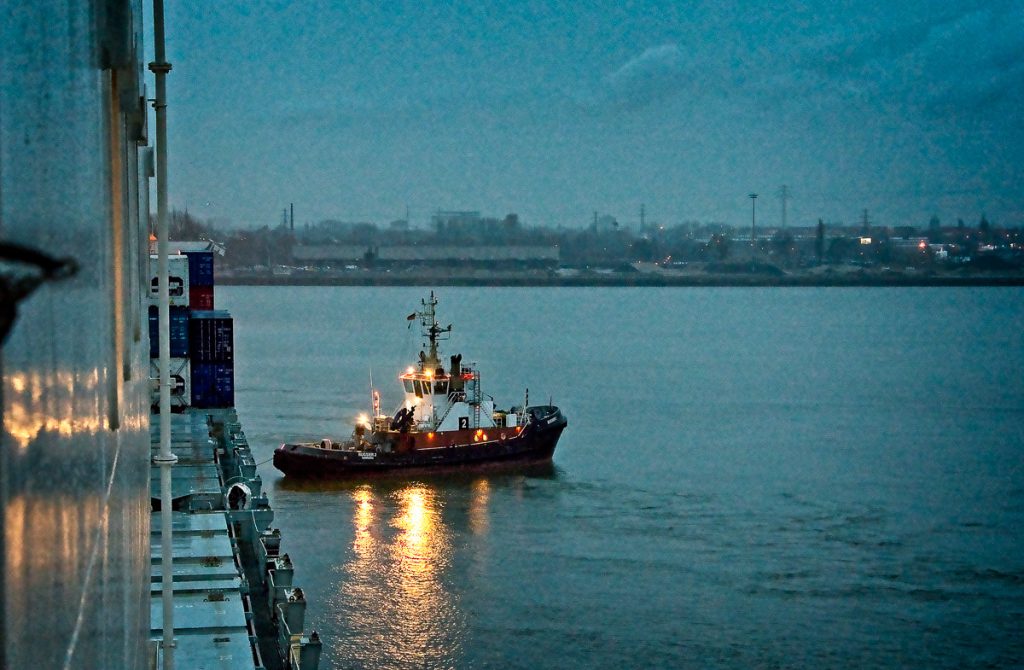
At 8:00, the tugs arrive. Shortly afterwards the lines are untied, and the tugs turn the ship by 180 degrees. Slowly we leave the harbour basin, pass the Cosco Capricorn, where the cranes are still busy packing containers, past the small beacon of the Ellerholzhafen, past the docks of Blohm and Voss to the Elbe. The crew unleashes the tugs, and off we go, down the river.
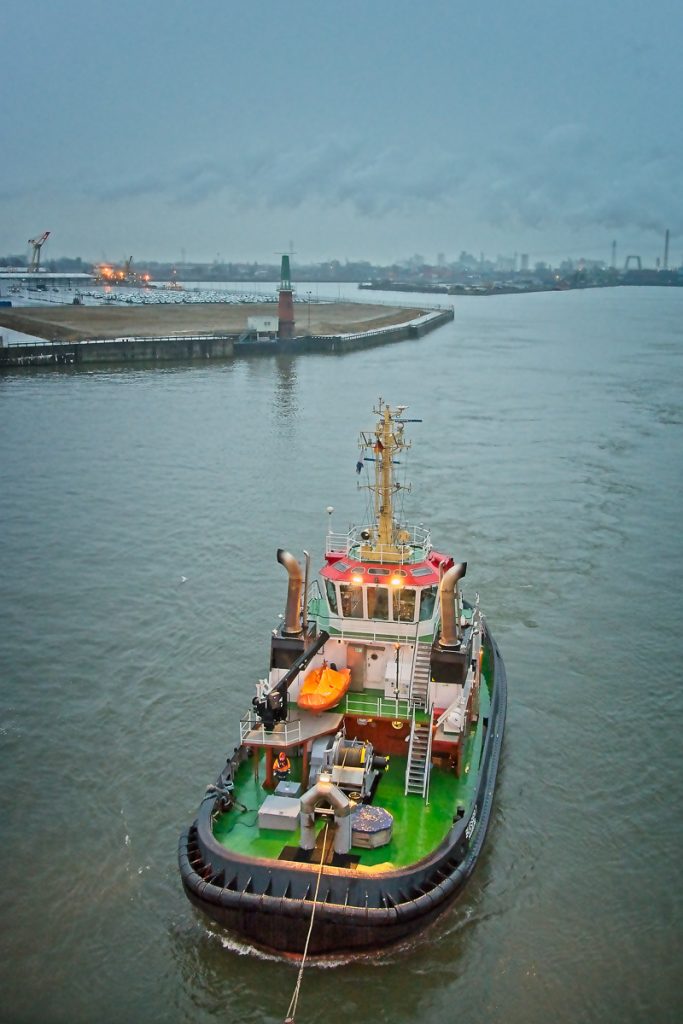
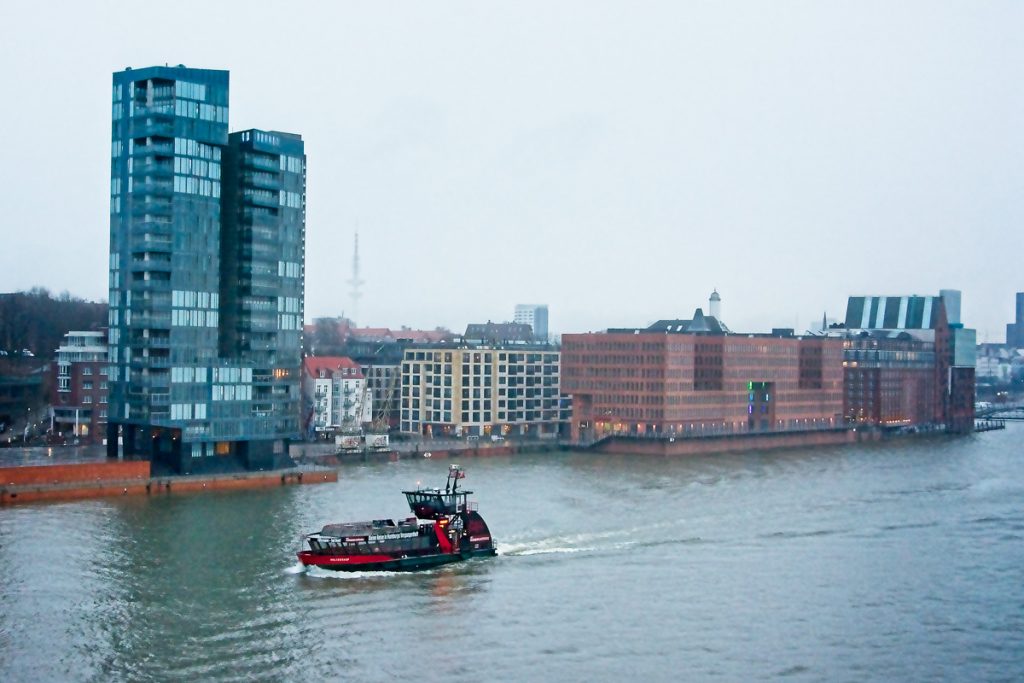
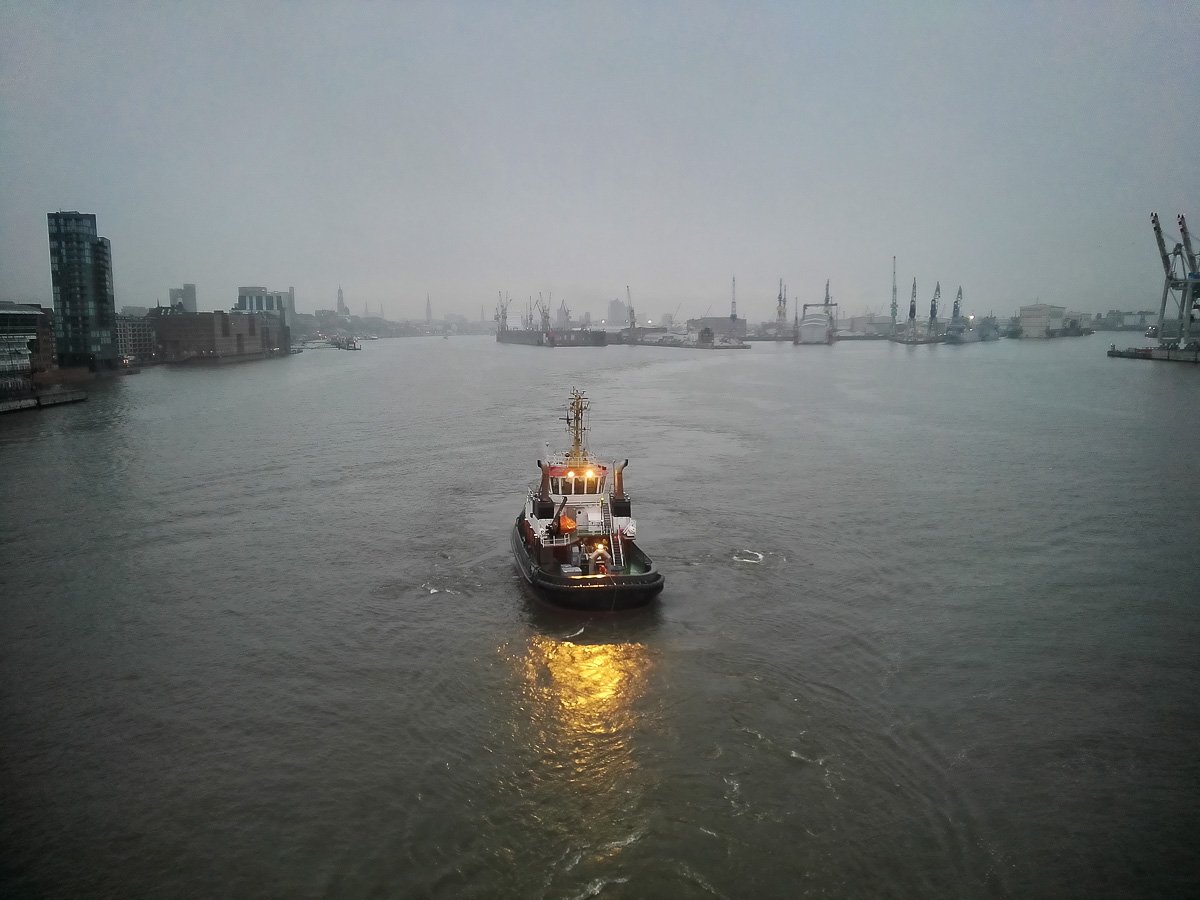
I’m on the aft decks photographing. Unfortunately, it is raining and quite cold. The landscape is grey in grey with low clouds of rain and fog. After a while, I go in and onto the bridge.
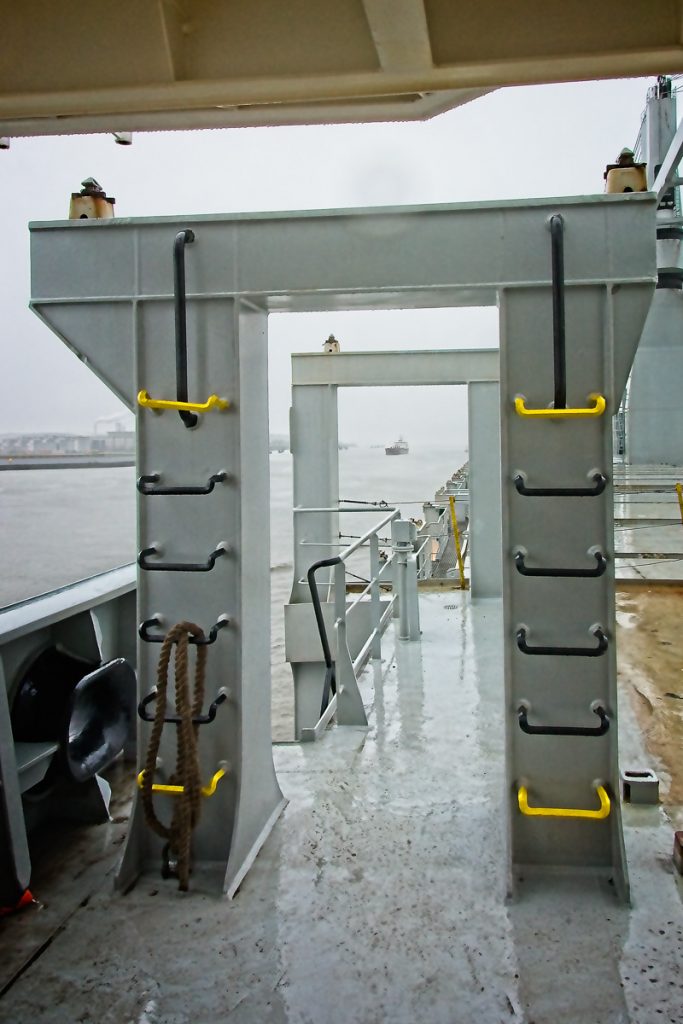
At breakfast, I had asked the captain if we were allowed on the bridge. He permitted it, however, under a few conditions, which related to our conduct. Of course, we must not interfere in the activities, disturb the officers or pilots in their work or touch any equipment.
The captain greets me with a smile. He sees my camera, and we briefly talk about photography. He also tells me that if I wanted to take pictures of persons, I should ask them first. That’s obvious and in the age of DSVGO is a given. Eventually, he goes to work, and I look out the window.
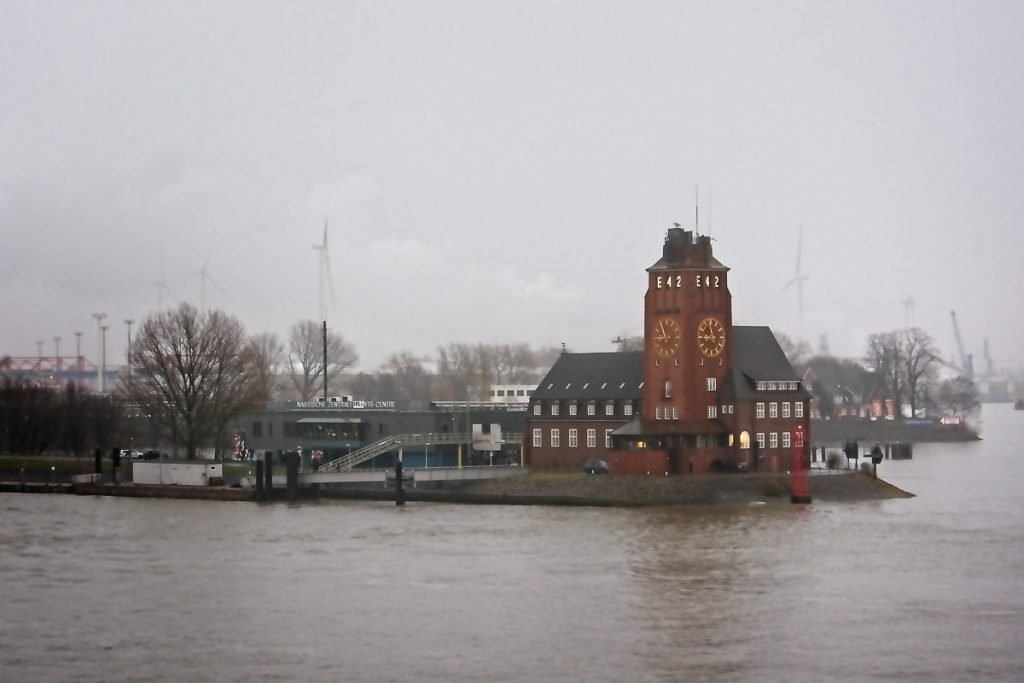
It looks as if the clouds are getting lower and lower. They filter all the colours out of the landscape (as far as you can see). Everything seems to be wrapped in grey cotton wool. The silence on the bridge reinforces this impression. A sailor sits in front of the steering wheel that is smaller than that of a car. He looks at the large screen of the GPS where the waterway is displayed. Of course, green and red buoys also mark the waterway on the river. The pilot sits silently next to him. The officers come and go.
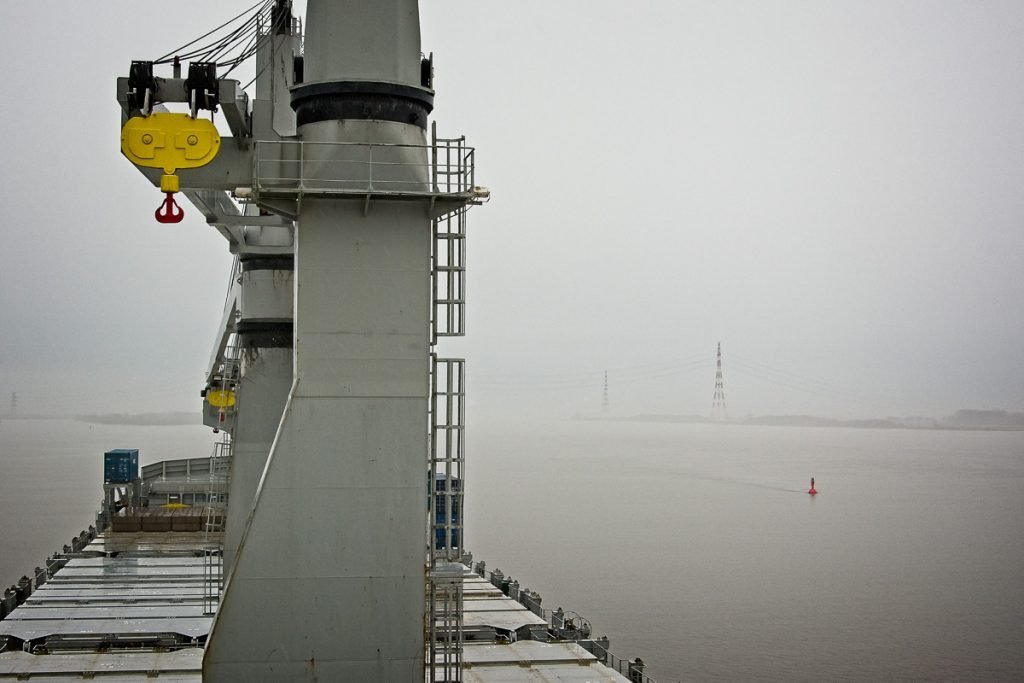
On the bridge, I have the idea to make a time-lapse video of the trip on the Elbe. We already travelled a bit, but I decide to try it anyway. I’ve never made a time-lapse video before, and now I can practice. However, the bridge is not the best location for photography, as I would have to shoot through a window. But it would be possible to do from my cabin window without going out into the cold and rain.
I go back to the cabin, watch a few short videos on the subject of time-lapse videos, read the section on interval shooting in the Nikon manual, and then gather all the equipment I need. I don’t have a tripod with me, but I do have a monopod where it is possible to unscrew the pole from the feet and use the feet as a small table tripod. I screw a ball head on it and put it in the window. There is just enough space on the windowsill for it to stand firmly. I attach the camera to the ball head and then start an interval sequence. A photo every 5 seconds. A total of 999 photos. Nikon can’t do more with onboard means. The result will be a time-lapse sequence of 40 seconds. At 10:30, I start with the sequence; at noon, I am done.
Since the ship is moving and I have to take pictures with the window open, I don’t want to leave the camera unattended. Therefore most of the time I stand next to it, drink coffee and look at the landscape.
The Elbe is now very wide. Now and then a village emerges from the fog, only to disappear into it again shortly afterwards. Maps.me, my new map app on the smartphone tells me that we will soon be in Cuxhaven. The North Sea is ahead of us.
Since I don’t know how long I will have mobile phone reception, I say goodbye to everyone via WhatsApp, and when I finish the sequence of 999 pictures, I go for lunch.
Only the captain, his wife and Pierre are still there. We talk animated. The captain’s wife can’t speak, but she smiles friendly, and I think I’ll get along well with her. The captain tells us that he is a passionate wildlife photographer and that the beautiful bird images in the officers’ mess are his. I tell him how much I like the picture of the Pelican. “It is a pelican, isn’t it?” I ask and look at Pierre, who is still sticking to his puffin theory. The captain is pleased with the praise and confirms the obvious: It’s an American pelican.
As we finish our meal, we arrive in the North Sea. There is still good reception from Cuxhaven, and I quickly call Anita again. Tomorrow we will have reached Antwerp, but in between, on the high seas, it will be the first time in a long time that we cannot contact each other immediately.
In the afternoon, I start to work on the time-lapse sequence. I view a few more videos and then start the software LRTimelapse, of which I have a test version. I can only edit 400 images in one sequence, but that’s fine for practising.
In between, Robert comes to change my sheets. We agree that he will clean my room when I make my day trip to Antwerp, probably the day after tomorrow. He also warns me that there would be an emergency exercise at 16:00, like every Saturday afternoon.
At 16:00 the alarm signal comes – seven short, one long – and we go, with helmet and life jacket on deck to the muster station. The Third Officer counts everyone present, and then, due to the bad weather, we can return to our warm cabins.
There are waves in the North Sea. They are not yet worth mentioning, says the captain, but I notice the movement, the swinging from right to left and the rolling from front to back. I have to get used to it now, but I’m still okay with it.
I continue to deal with the subject of time-lapse, and at the end, I am satisfied with my first sequence from the trip on the Elbe. Tomorrow I want to record our entry into Antwerp. The captain said that we have to go through locks. I look forward to this experience.
Here’s the result, my first time-lapse video:
At dinner, the captain hands me a three-page document. He has outlined the rules of conduct for the passengers. This captain likes clear rules. On the one hand, he seems authoritarian; on the other hand, it is easier for everyone if they know what they may or may not do. I had already wished for something like this from the old captain, but he didn’t have time with the crisis on board. In the end, the captain is responsible for the ship, the people on it and the cargo and is also the highest authority for everyone here. That is why I find his rules helpful and legitimate. The authoritarian image, however, is also broken by his friendliness. I can talk to him well.
Now it is pitch black night, in the most real sense of the word. I cannot remember the last time I experienced such darkness. In the harbour, the ship had always been brightly illuminated by its own spotlights and by the lights of the docks. Here, on the sea, everything is dark. Lights would make the work on the bridge more complicated and, just like you don’t turn on the lights in the car when you drive at night, all the lights on the ship remain switched off here. Because of the fog and the clouds, there are no stars or the lights of towns on the coast to be seen. It is a dark black night.
The satellite phone app works, but it’s complicated. I need half an hour to register and chat with Anita. The conversation of a few minutes costs 35 c.
Would you like to see an overview of all articles about my journey on the cargo ship Bright Sky? Click here for a table of contents.
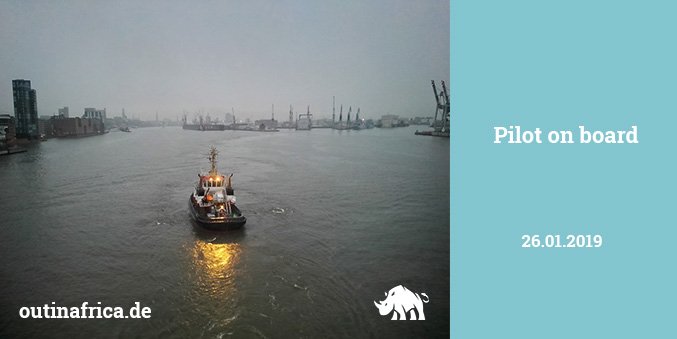


Leave a Reply